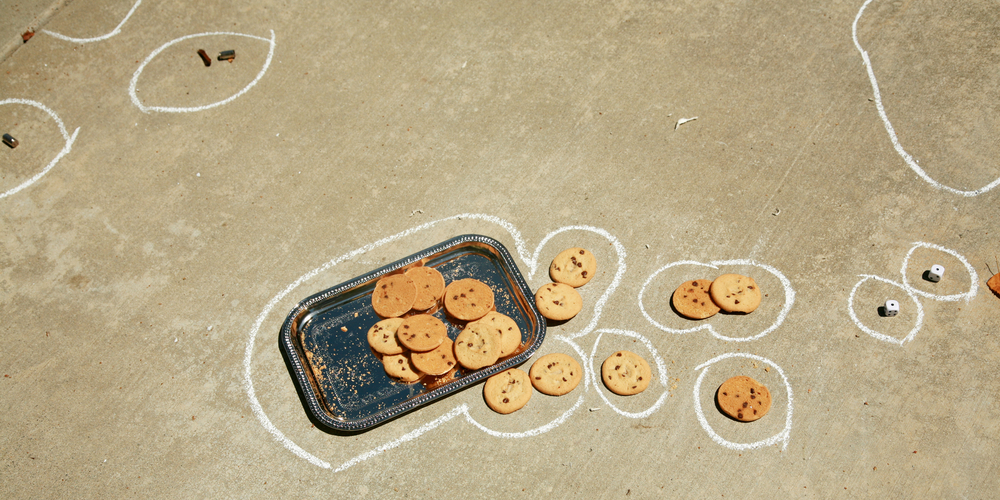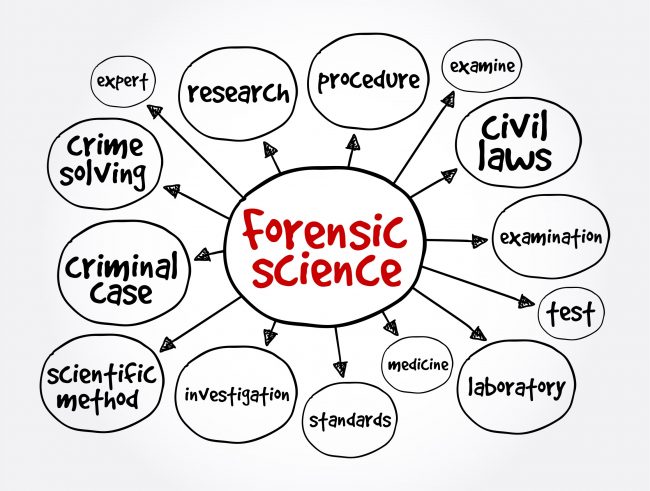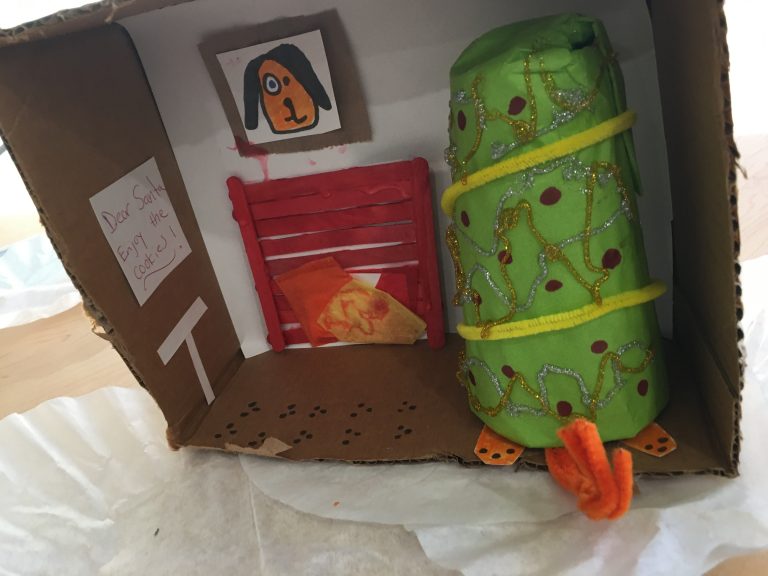Written by Education Outreach
December 14, 2021

Science helps answer questions big and small. From geology to ecology to biology, different disciplines provide investigative frameworks to explore the world around us.
Forensic science is the application of science to the law to solve a crime. Crime scene investigators are the front line – understanding their methods not only helps understand our justice system but gives you the tools to uncover the answers to your own mysteries, like who stole the cookies from the cookie jar?
Sleuthing science
After investigators document, photograph, collect and identify key pieces of evidence, forensic scientists examine it using scientific methods and practices. Fingerprints, shoeprints and tire marks are all types of pattern evidence. Trained examiners look at the patterns, or lack of patterns in worn areas, to make probable matches to a person, shoe or car.
Sweat and blood can also be examined for DNA evidence, which can identify a person using their unique genetic code. Finally, investigators consider digital evidence. Was an access identification card used for entry? What did the criminal purchase with their debit card on the day of the crime?
All of this information is essential to solving a case. As the world changes, so do the types of evidence crime teams are looking for. The field is always evolving.
“Using a collaborative approach, we’re working on not only cutting-edge technology for the laboratory but looking at ways we can examine evidence right at the scene,” said Christine Goldman, the Forensic Biometric/CSI Section Lead for FIU’s Global Forensic and Justice Center. “We want to educate the public so the jury, judges and lawyers are better equipped to understand what’s real and what’s Fauxrensics.”

Diorama dramaS
Can you harness your knowledge of evidence and the scientific process to solve a holiday mystery? Imagine getting ready for bed on Christmas Eve. You carefully put out the milk and cookies for Santa then go to brush your teeth. Before you dream of sugar plum fairies you decide to sneak one more peek, only to realize – Santa’s cookies are gone! Take a look at the picture of the crime scene. Study it for evidence to determine who stole the cookies?
Helpful Hint: Grab a piece of paper and a writing utensil. Make observations. Sometimes items seen at first glance don’t look like evidence, but after placing in context, they can tell a different story.

Make your list (check it twice)
SPOILERS AHEAD:> Did you solve the crime? Who stole Santa’s cookies?
If you guessed the family dog, you’re correct! If you missed the evidence that gave it away – check out the dog paw prints leading from the door in the kitchen to the table. Also note, the cookie crumbs found in front of the dog bed. One of the partially eaten cookies has drool which is purely K-9.
Create your own
Feeling inspired? Use what you’ve learned about the types of evidence, how it’s gathered and the importance of context clues to make your own holiday mystery diorama. Follow our step-by-step guide to make your case come to life. Don’t forget before you start building, you must first identify what the crime is, the evidence left to solve it and of course – the culprit.
Download Holiday Crime Scene Diorama Activity Sheet
More to … SOLVE
Want more? Forensic science is a dynamic field. Check out the following to continue your journey:
- Learn About Non-Human Detectives—Humans aren’t the only ones that can locate evidence. FIU’s Global Forensic and Justice Center trained dogs to detect COVID-infected individuals using their sense of smell. This science has also been used to detect invasive animals and fungus killing avocado trees.
- Participate in an interactive lab—CASE Education Outreach offers fun, interactive opportunities to cultivate and fine-tune the skills of your inner forensic scientist. Evidence Room is a great place to start, with Code Breakers and DNA Detectives as great follow-ups.
The challenge to create something new is enthusiastically accepted by artists and scientists alike. Whether repurposed, recycled or reimagined – there are many ways to make something unique to solve a problem or enhance the world. Follow FIU@Home for more ways to create something new.